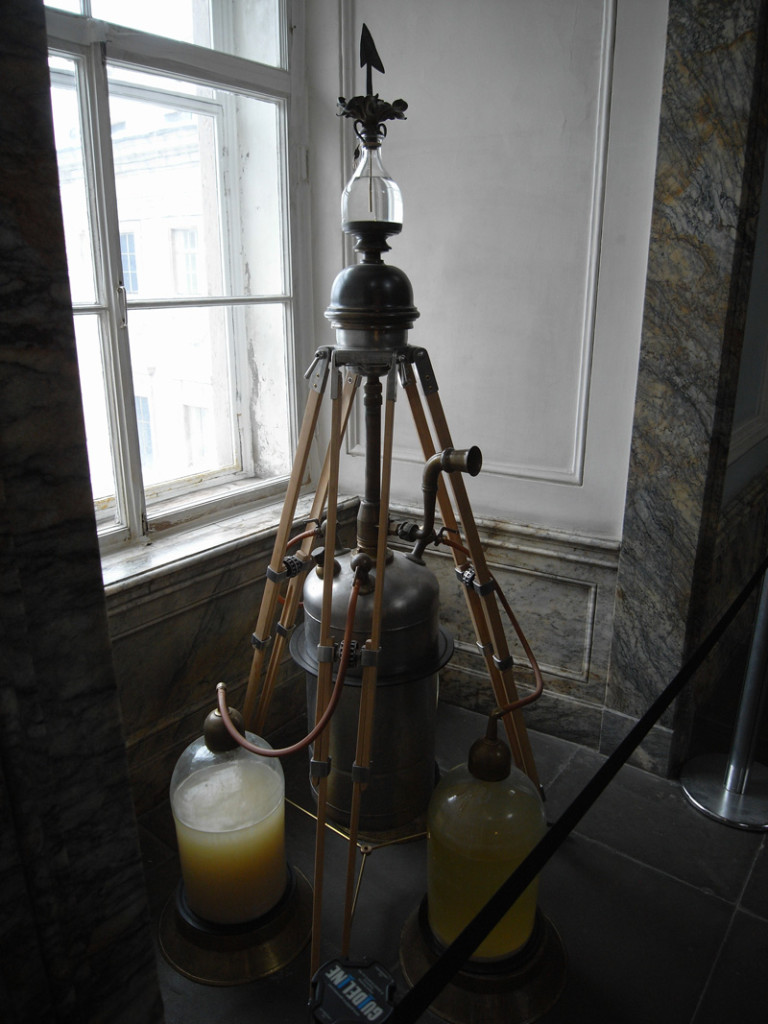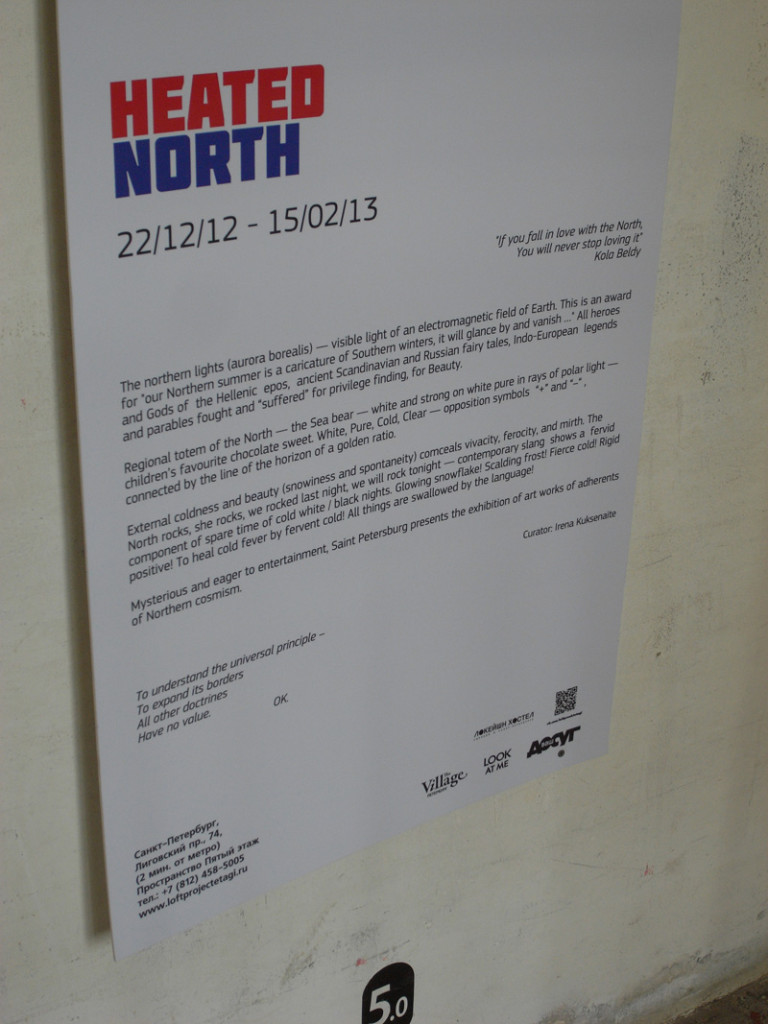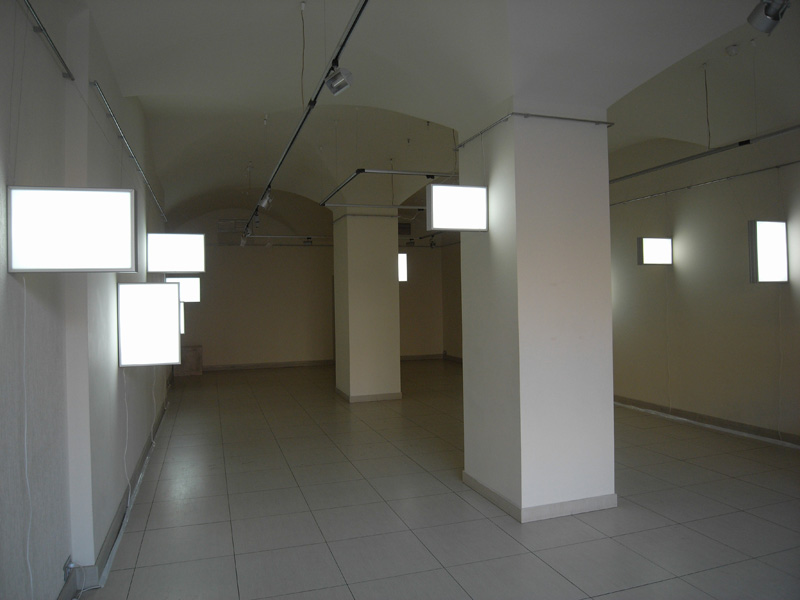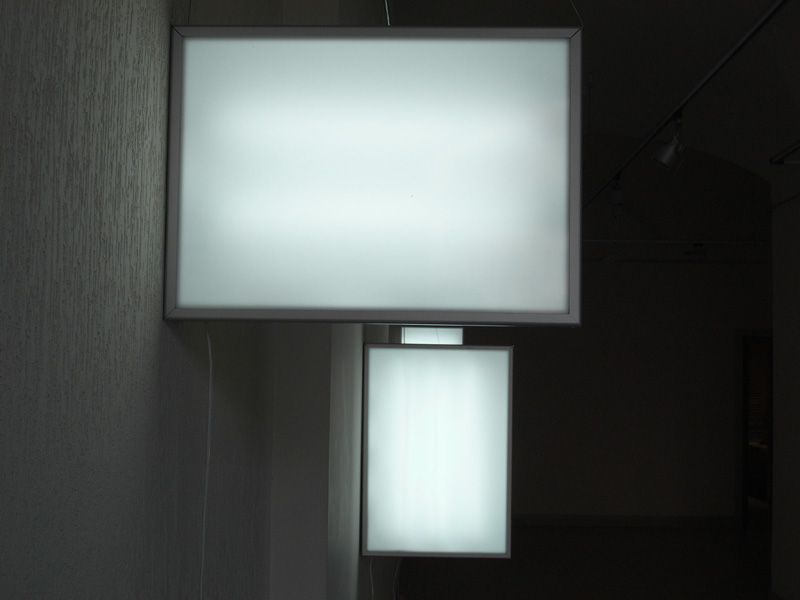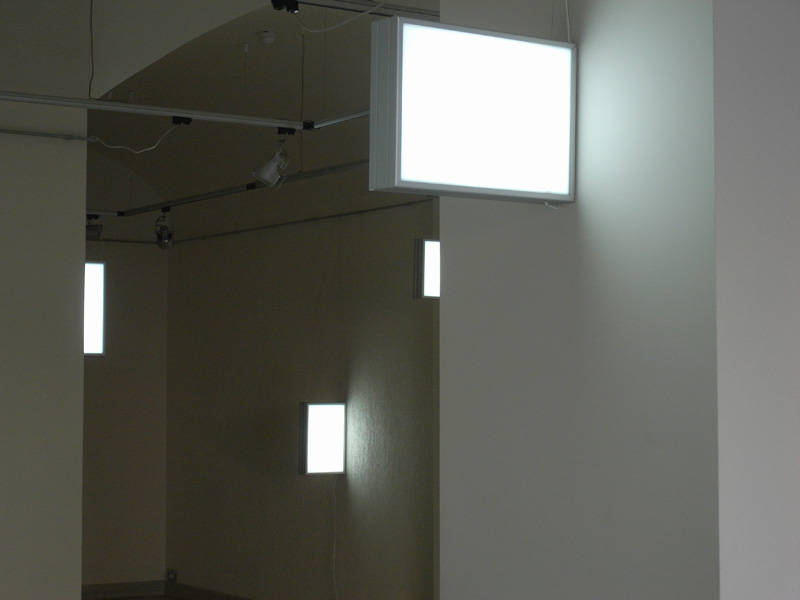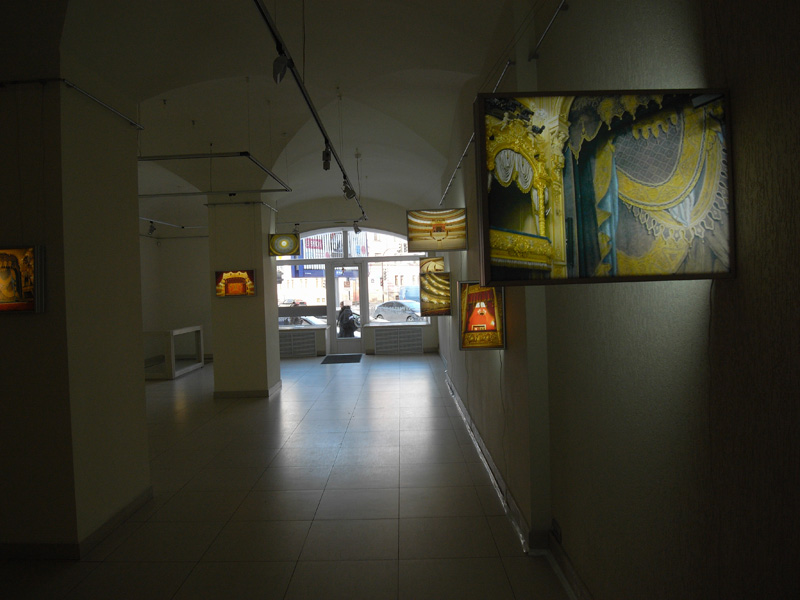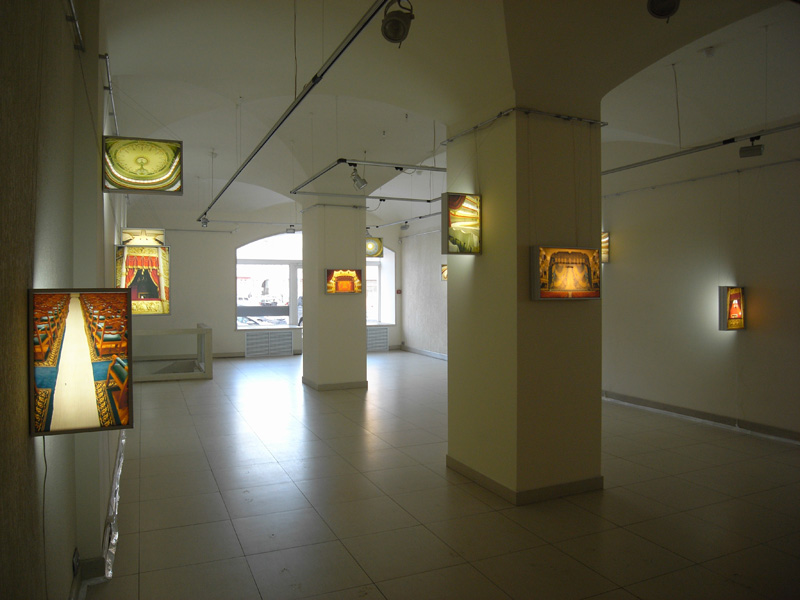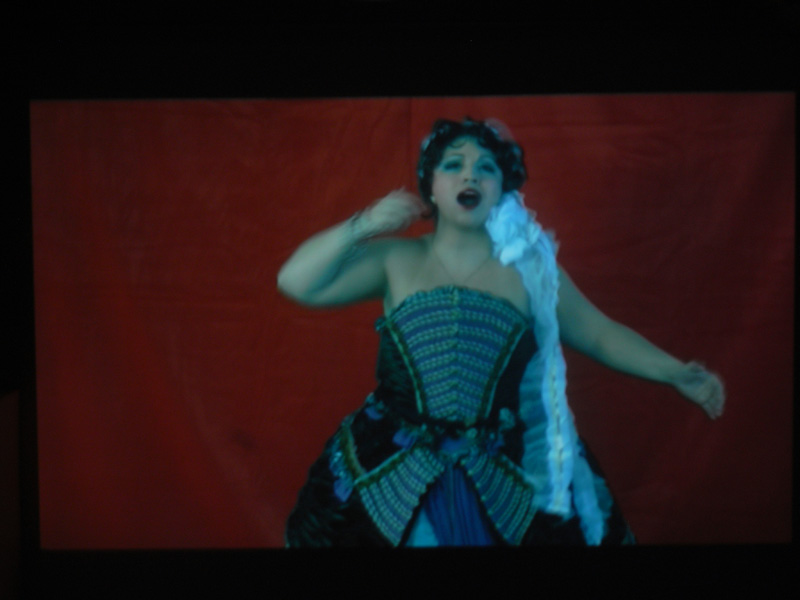Saint Petersburg is a city famous for its historical architecture as well as art collections spanning many centuries of art history. Two big institutions which stand out are the Hermitage and the Russian Museum. Both of the museums have numerous locations around Saint Petersburg. The Hermitage is known for its almost endless amassment of classical European artworks. The Russian Museum is a ‘national gallery’ with a long tradition of collecting Russian art – the collection features works starting from the oldest icon paintings up to the 20th century. They also organize exhibitions of contemporary Russian art. I found the Russian Museum more interesting. The permanent collection provides a great window on Russian art in the past.
In this article, I wanted to look beyond the large collections of the past centuries and focus on what is happening in Saint Petersburg today. Compared to the size of the city, the contemporary art scene is not very big. But if one searches, there are still interesting things to be found. I compiled the places and shows I have visited and what impression they left behind on me: temporary exhibitions in the Russian Museum, NCCA / Pro Arte, Loft Projekt Etagi, and ART re.FLEX gallery.
Russian Museum http://rusmuseum.ru/eng/home
In addition to the huge permanent collection, the Russian Museum houses also temporary shows featuring more ‘contemporary’ art. I managed to peek into three temporary shows. In the Benois Wing of the main building, there was a show by some probably established Russian painter whose name I forgot, but it was quite a pitiful sight: While his social realist paintings of athletes still had a spirit, in his latter career he turned to painting portraits of his wife in holiday resorts and figurative Biblical themes…. Russia today? Another exhibition was a larger retrospective of the 20 years of Russian art (90s and 00s). There were some interesting pieces to be found, but the overall impression was mediocre as it seemed that the curators had no choice but trying to please everyone – including those who think that the aforementioned painter was a great artist and/or that religious art is the only ‘real’ art… There was not a single video or new media artwork in the show, which was a bit shocking for me… as if the time stopped in the 60s… But it was not all that bad. Actually, probably the best contemporary (kind of) art show I have encountered in Saint Petersburg took place in the Russian Museum’s Marble Palace: A show titled “Resonant Matter” where artworks related to sound or directly sound-based works were displayed. Within the given segment, the theme was interpreted quite broadly – from turn-of-the-century paintings of musical instruments, to violins designed in cubist style, to miscellaneous metal sculptures the audience could bang on, to interactive installations, sound installations and video works. The pure amassment of works was quite impressive. And there were really good pieces – too many to mention individually. The only issue with the show was that quiet and noisy works were mixed together which meant that some kid was banging on some metal sheets while someone else was trying hard to listen to some very delicate sound sculpture right next to it. The temporary exhibitions at the Russian Museum have a no-photos policy, so I just secretly snapped a few shots from the Resonant Matter exhibition, because it was so great.
NCCA / Pro Arte Foundation
http://www.proarte.ru/en/ http://www.ncca.ru/en/main?filial=6
Pro Arte organization was closely affiliated with NCCA, the National Centre for Contemporary Arts. They seem to focus on organizing different lectures and workshops related to arts (in Russian, so I did not follow that). During my stay, there was a show dedicated to John Cage taking place. I have already seen a much larger John Cage show at the Mumok in Salzburg last summer, so this one looked a bit small in comparison. In a similar take as with the lectures and workshops organized by ProArte, the aim was more and educative one – introducing John Cage to a Saint Petersburg audience. It was still very worthwhile to see, but it did not provide much new information for me personally. If a real Cage specialist was to judge this exhibition he would probably lament the lack of original works or spatial installations – most of it was video or paper (some original and some facsimile).
Loft Projekt Etagi http://www.loftprojectetagi.ru/
This building – 5 storey tall in a backyard – seemed to be an ex-squat converted into a fancy art space – with a restaurant, design shop and model agency. There was a number of exhibition spaces in the house, each of them featuring a different show. The walls surrounding the small courtyard in front of the building entrance served as a kind of outdoor gallery with big photo prints on plastic sheets hung on the walls – portraits of kids in sailor suits. On the ground floor an exhibition space was showing something that looked like an architecture student’s end-of-term exhibition: Proposals of new public transport signage etc. The installation was a bit trashy. Higher up, a gallery was showing a small retrospective of a graphic designer (Mark Petrov) – the author of the Aeroflot logo. The exhibition consisted of many tiny framed displays of logos, stamps, posters, record covers etc. It felt a bit monotonous. Still, I appreciated the show for its informative value – introducing a designer/artist I did not know previously. I was free to take photos, so here’s a few shots of the show.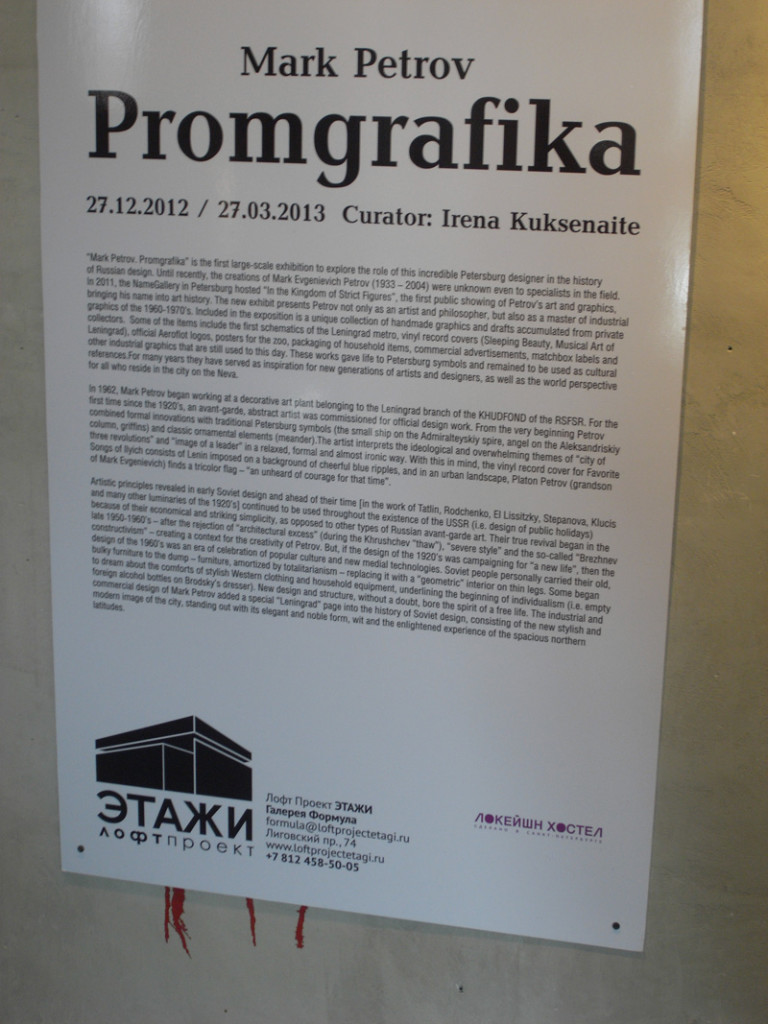
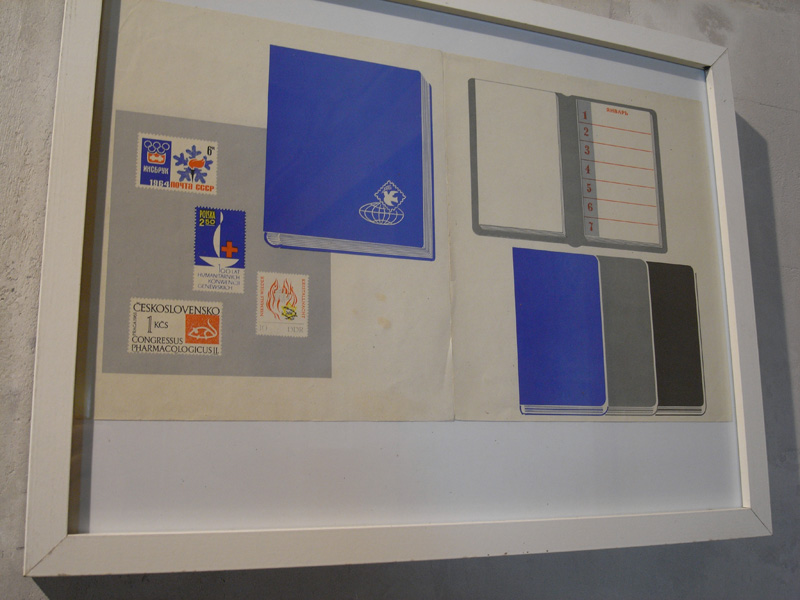
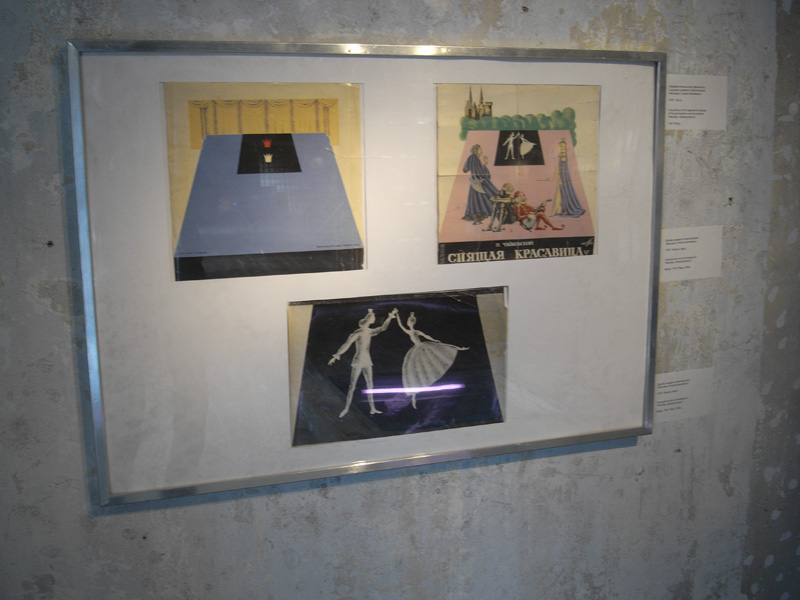 The top floor of Etagi had the biggest exhibition space. There was an exhibition titled “Heated North” themed around the North Pole, winter and snow. The whole installation felt a bit messy and no one bothered much with creating a custom exhibition architecture – artworks were simply hung on the walls one next to the other. The time span of the works on show was quite broad (90s – today), but I could not really figure out what kind of artists have been invited to the show. There was basically no information available besides a small generic exhibition concept description. The overall setup gave it an art-school-like feeling: A mixture of different styles selected simply on visual relation to the main topic (Read: North – North Pole – penguin – ice bear – snow etc.). Let the photos speak for themselves:
The top floor of Etagi had the biggest exhibition space. There was an exhibition titled “Heated North” themed around the North Pole, winter and snow. The whole installation felt a bit messy and no one bothered much with creating a custom exhibition architecture – artworks were simply hung on the walls one next to the other. The time span of the works on show was quite broad (90s – today), but I could not really figure out what kind of artists have been invited to the show. There was basically no information available besides a small generic exhibition concept description. The overall setup gave it an art-school-like feeling: A mixture of different styles selected simply on visual relation to the main topic (Read: North – North Pole – penguin – ice bear – snow etc.). Let the photos speak for themselves:
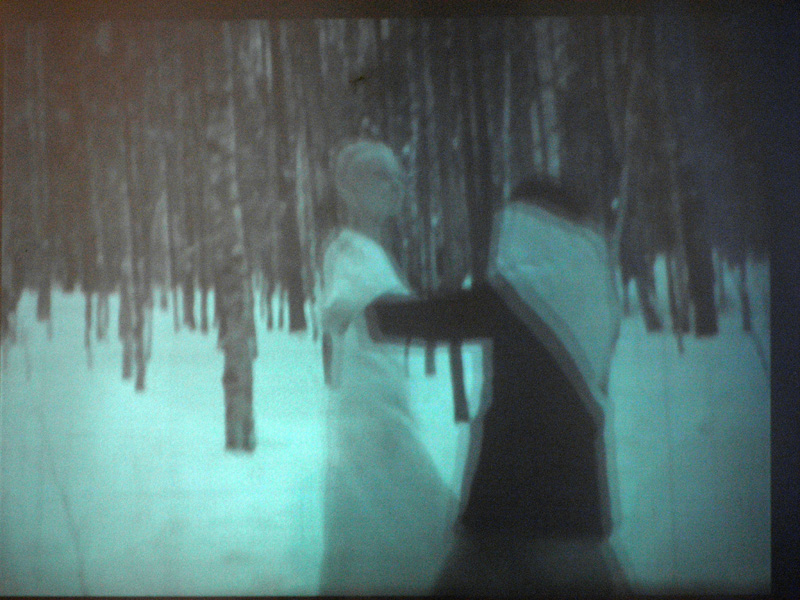

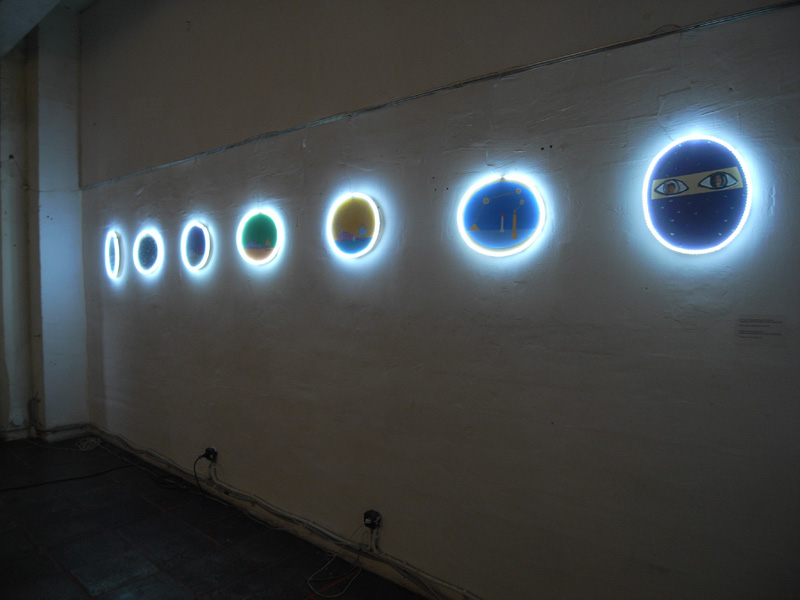
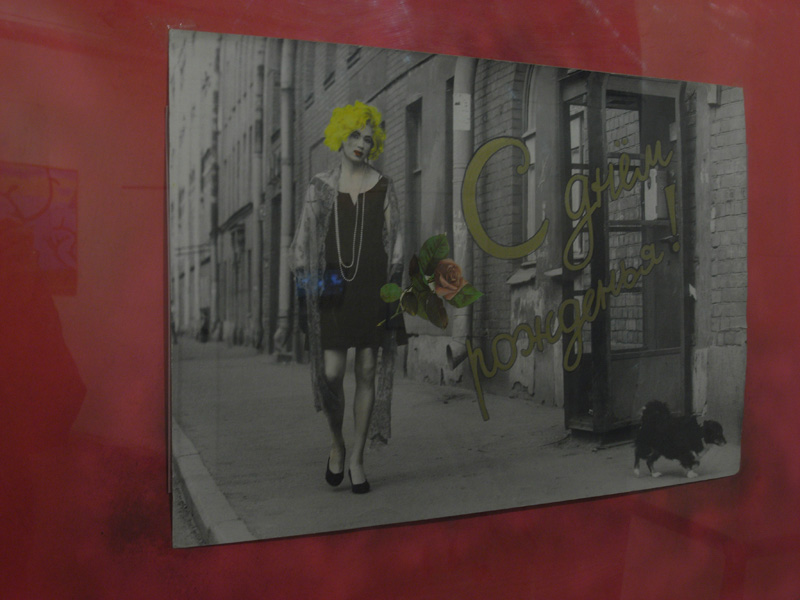
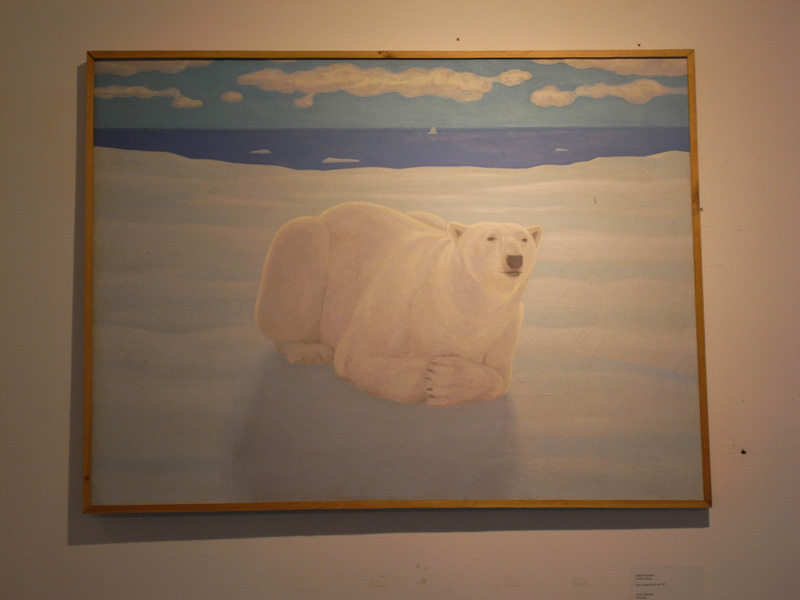

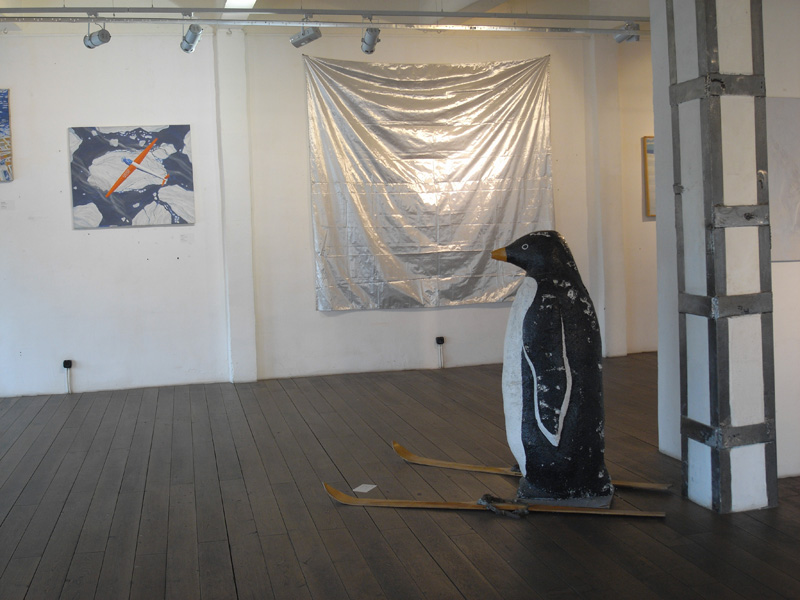

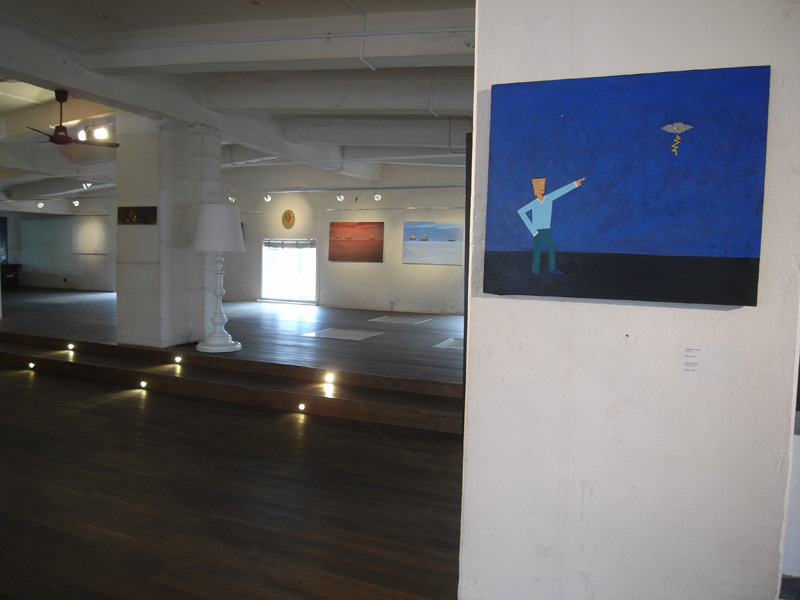
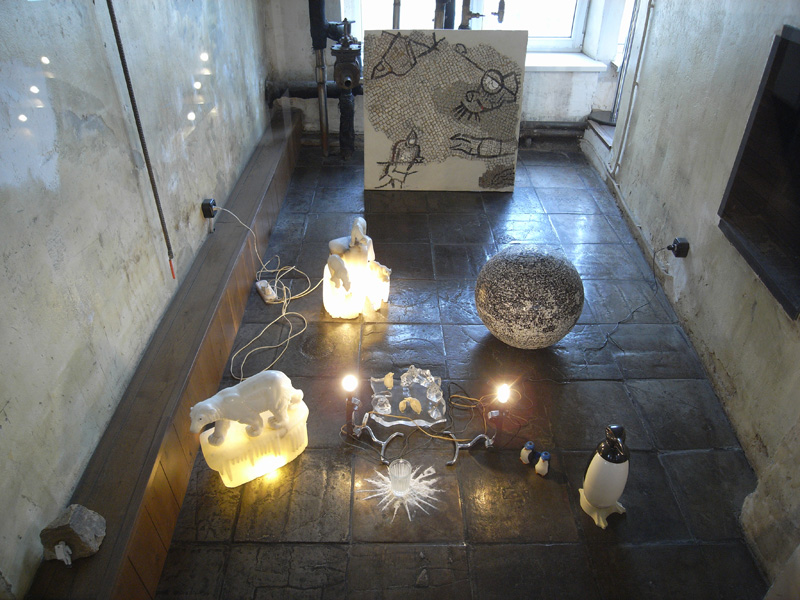
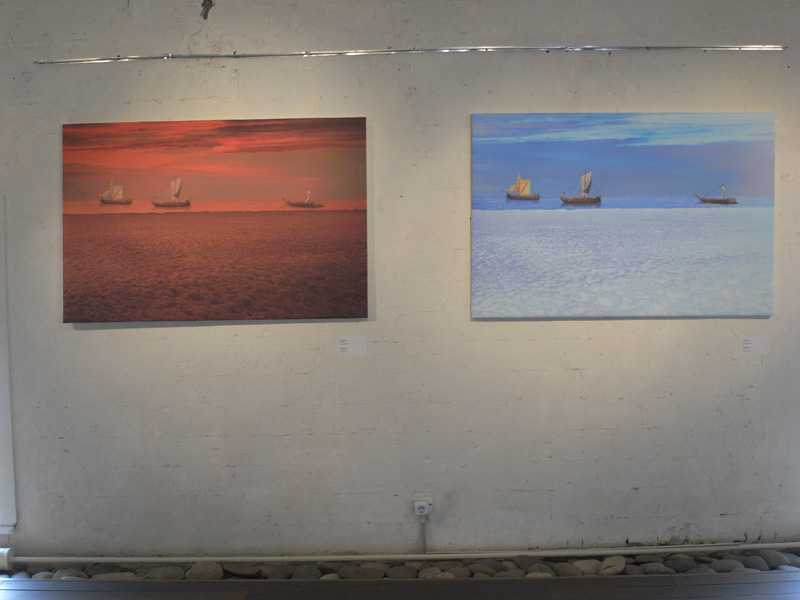 The Etagi space as a whole was quite pleasant for strolling around for an hour or two and having a coffee or lunch in the restaurant – in modern design and with nice food – but it was obvious that the ‘art’ here has been pushed into the position of a lifestyle accessory rather than the focus point.
The Etagi space as a whole was quite pleasant for strolling around for an hour or two and having a coffee or lunch in the restaurant – in modern design and with nice food – but it was obvious that the ‘art’ here has been pushed into the position of a lifestyle accessory rather than the focus point.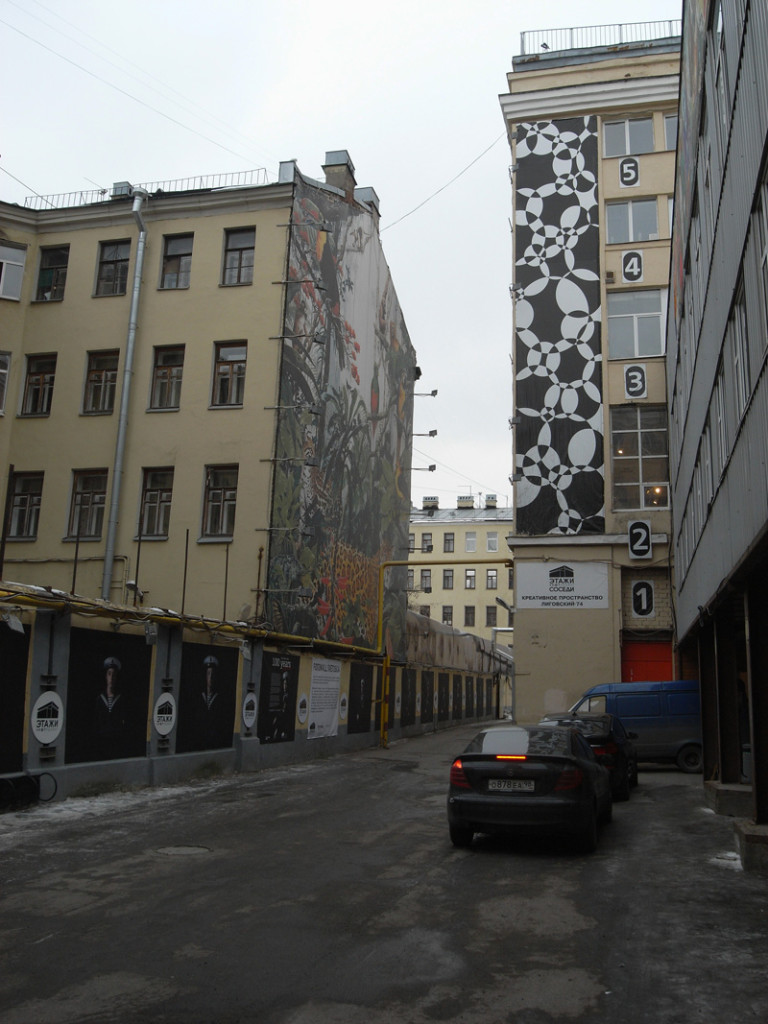
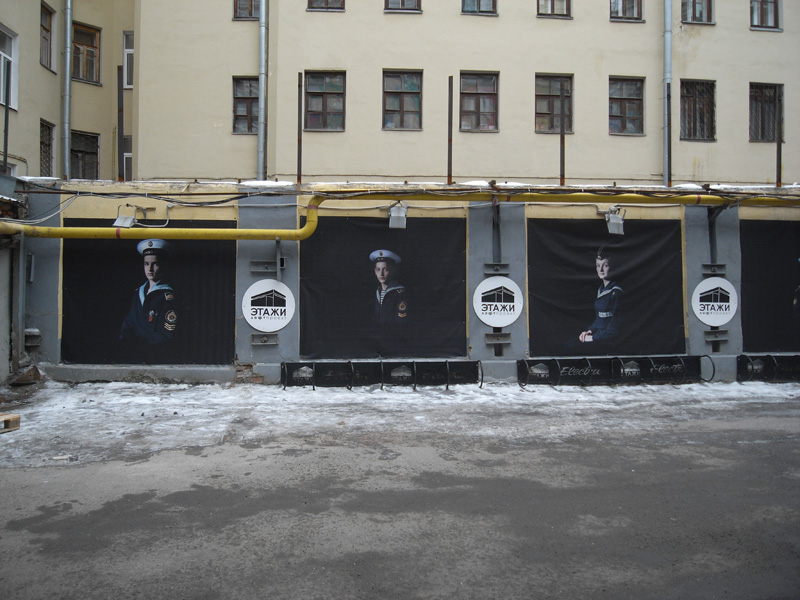
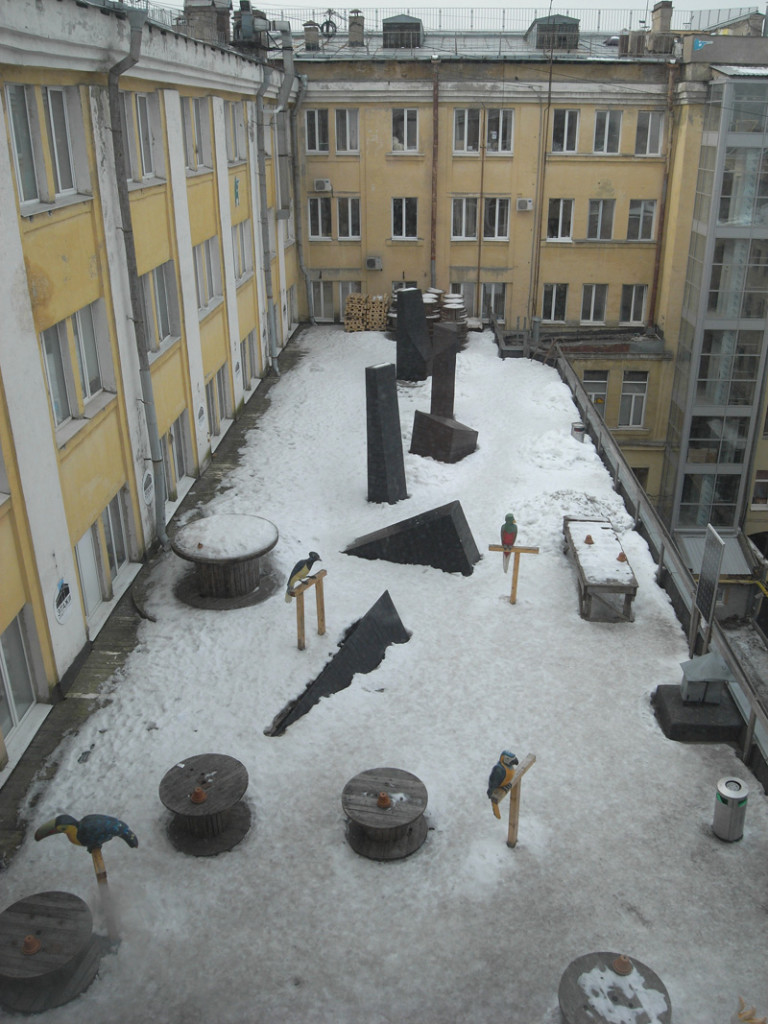 Art re.FLEX http://www.artreflex.ru/en
Art re.FLEX http://www.artreflex.ru/en
This was the only private gallery I visited during my stay in Saint Petersburg. Actually the space as well as the show there was quite nice. Veronika Rudyeva-Ryazantseva’s “Intermission” covered both the ground floor as well as the ‘cellar’ of the space. On entrance the visitor saw only ‘blank’ light boxes which looked like minimalist sculptural objects. However after entering the space photos at the ‘back’ (in relation to the entrance) of the light boxes revealed themselves: Empty theatre stages and drop curtains. On the underground level, a number of video projections were displayed: Drop curtains being raised and lowered slowly, and an opera player singing something about art in Italian. There was no English text or explanation available for the show, but still I felt that this artwork was quite fresh. I appreciated how the gallery used the whole space to present one large body of work of an artist. (Well, now I am talking from a Shanghai perspective, where the majority galleries care just about hanging something portable enough to sell on the walls). Here a few images from the show:
My time in Saint Petersburg was limited and there were a few other places that I wished to visit, but did not manage to do so. One of them was Pushkinskaya 10 (http://www.p-10.ru/), an ex-squat existing from the 90s. The opinions of friends I asked as well as on-line opinions were split about this place, and I was not sure whether to expect another instance of Etagi, or some ruins of an earlier glory similar to how Tacheless in Berlin used to look like before its closure. Only another visit to Saint Petersburg will tell. Another prominent place I missed was the Erarta Museum (http://www.erarta.com/eng/). I put it at a lower priority because I found the website quite a turn-off (photos of long-legged models in the gallery enjoying paintings, which signaled to me a traditional approach of ‘collecting paintings’) and my friends gave me also mixed messages about this place. However if I had more time, it would probably be worth to have a peek at least. A third place which I however have no details of is a large art warehouse on the outskirts of Saint Petersburg. Somebody mentioned it to me, but I did not have time to inquire about the details. Again, I will keep it on my to-do list for my next Saint Petersburg visit.
Once I overcame my initial confusion and got into an ‘explorer’ mode, I started to enjoy Saint Petersburg’s art scene. It would need some more time (and some Russian language lessons) if I wanted to go deeper, but my first taste of it still left behind a feeling of wanting to see more. In the summer probably even more is happening. One last useful resource for art news that I would like to mention is the artguide.ru website for Saint Petersburg which contains most recent listings: http://www.artguide.ru/en/spb/events/1


